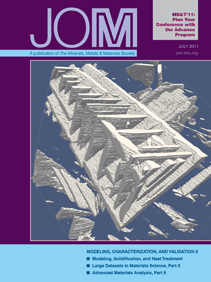 |
TMS
ONLINE | TMS
PUBLICATIONS | SITE
MAP JOM Material Matters Articles in Full-Text Format: March 2004 |
|
|
|
|
Exploring traditional, innovative, and revolutionary issues in the
minerals, metals, and materials fields.
|
|||||
| OUR LATEST ISSUE | |||||
|
VISIT THE JOM COVER GALLERY
|
The Importance of Intellectual Property Due Diligence in Mergers and AcquisitionsArnold B. SilvermanWould you buy a house without making a thorough inspection of the same or, more preferably, having a professional inspect the house? Probably not. The same concept applies to intellectual property acquisitions. All patents, trademarks, copyrights, and trade secrets are not created equal. Even if they were, they might lose some of their luster subsequent to creation of rights. Prior to the closing, an intellectual property specialist should completely evaluate the property being acquired. This entails not only sharing full details of the transaction and the objectives with the intellectual property attorney, but also his or her working closely with the general attorneys representing the purchaser and being given adequate time to complete a thorough evaluation. While it is difficult to generate a comprehensive, universally applicable check list, certain general concepts apply to most acquisitions. It is important to confirm that the seller owns all of the rights in the property. Investigating this issue will involve examining the chain of title which, hopefully, has been established through assignments. Also important are checking employment agreements, and, with respect to copyrights, determining if a “work for hire” existed, thereby creating ownership of the copyright in a work in the employer who is by statute deemed the author. It is important to check the records regarding any transfer or security interest granted in the property. If there are invention disclosures that have not yet become the subject of patent applications, the inventor’s obligations to assign should be evaluated in the event that there has not been an assignment of the invention. It is important to review all files dealing with patents and trademarks, trade secrets, and copyrights, as well as relevant license agreements, confidentiality agreements, joint venture agreements, and, where applicable, confirmation of payment of maintenance fees and taxes. In intellectual property files, one must look not only for defects in the property or issues of ownership, but also any factors that could contribute to the strength or weakness of the property. Before an acquisition, the buyer must ascertain whether there have been any charges of infringement made by the seller in respect of the property in question, or charges of infringement made by a third party against the seller. If there has been, one must determine if it was resolved, and if so, was it through an ongoing license or through litigation? If it is unresolved, what risk factors are involved in the acquisition? To the extent that there may be unasserted claims against third parties for infringement of the intellectual property, it is important that opinions provided to the seller by counsel must be examined. If all litigation is involved, the intellectual property should be evaluated to determine the current status of the litigation and any rulings that may have had an impact on the intellectual property rights or related business activities. If the final resolution has merged into some sort of agreement, confirmation of adherence to the agreement and the nature of the obligations of the party should be considered. Employment agreements should be examined to make sure that they have adequately protected the seller. With respect to licenses involving the intellectual property, is it clear that the seller has the right to assign the rights and obligations under the agreement to the buyer or, in the alternative, would the assignment be subject to any such agreements? It is desirable to check any exhibits listing the intellectual property and ownership with publicly available records to confirm that the two sources provide identical information. If not, corrective action needs to be taken prior to or at the closing. With respect to the agreement involving the acquisition, it is critical that the seller provides appropriate warranties such as warranty that it owns full title in the intellectual property as well as representations regarding controversies, litigations, claims of infringement, title disputes, and any other specific matters that are important to the buyer and the transaction. These warranties provide added insurance that, if they turn out to be incorrect, there has been a breach of contract that permits legal action for relief. The evaluation may also involve the creation of an appraisal of the value of the intellectual property. This not only can impact the purchase price, but as to allocation of intellectual property between depreciable and nondepreciable assets, for example, the tax consequences can vary substantially. Arnold B. Silverman is chair of the Intellectual Property department and a member of Eckert Seamans Cherin & Mellott, LLC in Pittsburgh, Pennsylvania. For more information, contact A.B. Silverman at Eckert Seamans Cherin & Mellott, LLC, 600 Grant Street, 44th Floor, Pittsburgh, Pennsylvania 15219; (412) 566-2077; (412) 566-6099; e-mail abs@escm.com.
|
Copyright © 2003 by The Minerals, Metals & Materials Society.
Direct questions about this or any other JOM page to jom@tms.org.
Search TMS Document Center Material Matters Contents JOM TMS OnLine
